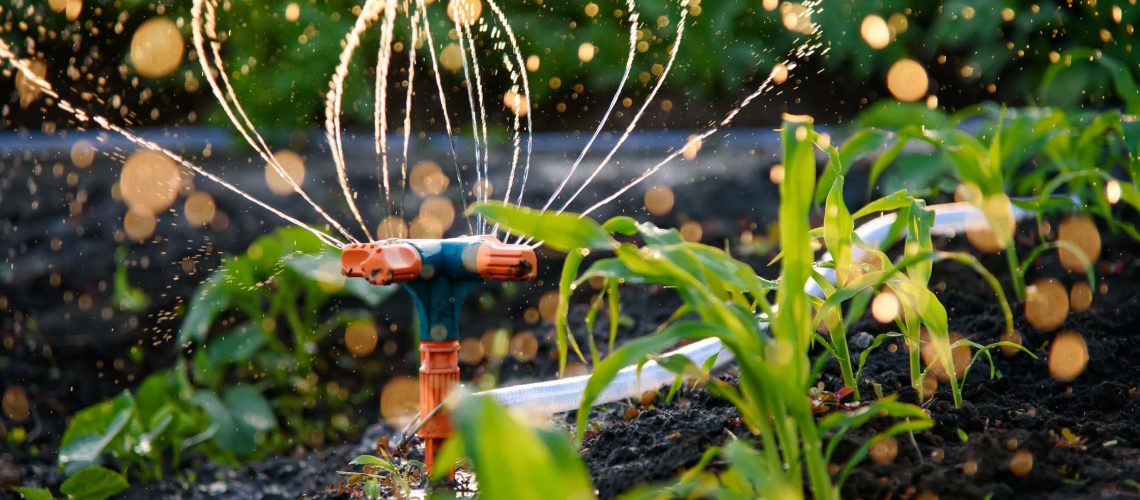‘Water is life,’ a saying that rings especially true when it comes to nurturing your edible landscape. With the right irrigation techniques, you can enhance the health and yield of your garden significantly.
But where do you begin when it comes to ensuring your plants receive the optimal amount of water without wastage? Let’s explore some key strategies that can make a real difference in your gardening journey.
Choosing the Right Irrigation System
When selecting the appropriate irrigation system for your edible landscape, consider factors such as water efficiency, plant needs, and installation requirements. Efficiency is key in ensuring your plants receive the right amount of water without wastage. Drip irrigation systems, for instance, deliver water directly to the plant roots, reducing evaporation and runoff. This method is ideal for edible plants as it provides consistent moisture while minimizing water loss.
Another factor to consider is the specific needs of your plants. Different types of edible plants require varying amounts of water and frequency of irrigation. Make sure to choose a system that can be customized to meet these individual needs.
Additionally, think about the installation process. Some systems may require professional assistance for setup, while others are more DIY-friendly. Select a system that aligns with your capabilities and resources to ensure a successful installation.
Watering Techniques for Edible Plants
Selecting the right watering techniques for your edible plants ensures optimal growth and health. When it comes to watering your edible landscape, here are some effective techniques to consider:
- Drip Irrigation: This method delivers water directly to the roots of the plants, reducing water waste and minimizing weed growth.
- Soaker Hoses: These hoses release water slowly along their length, providing a deep, slow soak to the soil without water runoff.
- Mulching: Applying a layer of mulch around your plants helps retain soil moisture, reducing the frequency of watering needed.
- Hand Watering: For delicate or individual plants, hand watering allows you to control the amount of water each plant receives, ensuring they get just the right amount.
Timing and Frequency of Irrigation
To ensure the health and growth of your edible plants, understanding the optimal timing and frequency of irrigation is essential. The timing of irrigation is crucial as it affects the absorption of water and nutrients by your plants. Watering in the early morning allows for moisture to reach the roots before the heat of the day evaporates it, promoting better absorption. It also helps in preventing fungal diseases by allowing the foliage to dry off during the day. Additionally, watering in the morning reduces water loss due to evaporation.
The frequency of irrigation depends on various factors such as the type of plants, soil drainage, and weather conditions. It’s important to water deeply but less frequently to encourage deep root growth and drought tolerance. Monitor the moisture levels in the soil by checking it regularly to avoid overwatering or underwatering. Adjust the watering schedule based on seasonal changes and plant requirements to maintain a healthy and thriving edible landscape.
Soil Preparation for Efficient Watering
Prepare your soil properly to ensure efficient watering practices for your edible landscape. To maximize water retention and distribution, follow these tips:
- Loosen the Soil: Break up compacted soil to allow water to penetrate deeply and reach plant roots effectively.
- Add Organic Matter: Incorporate compost or well-rotted manure to improve soil structure, water retention, and nutrient availability.
- Check Soil pH: Test your soil’s pH levels and adjust as needed to ensure optimal nutrient uptake by your plants.
- Consider Soil Composition: Understand your soil type (sandy, loamy, clay) to tailor your watering schedule and methods accordingly.
Utilizing Mulch to Conserve Water
Consider mulching your edible landscape to effectively conserve water and nurture plant growth. Mulch acts as a protective barrier, reducing evaporation and keeping the soil moist for longer periods.
By applying a layer of mulch around your plants, you can minimize water loss through evaporation and reduce the frequency of watering. Organic mulches like straw, wood chips, or compost not only help retain moisture but also improve soil structure as they break down.
In addition to water conservation, mulch regulates soil temperature, suppresses weeds, and prevents soil erosion. When adding mulch to your edible landscape, ensure it’s applied evenly and kept away from the plant stems to prevent rotting.
Consider replenishing the mulch layer periodically to maintain its effectiveness in conserving water and supporting plant health. Embracing mulching practices in your landscaping routine can lead to healthier plants, reduced water usage, and a flourishing edible garden.
Optimize Your Irrigation Practices For Edible Landscapes With Southwest Florida Services & Supply
By implementing the right irrigation system, watering techniques, timing, soil preparation, and mulching, you can maximize the productivity of your edible landscape.
These tips will help you achieve lush and thriving vegetation in your garden, ensuring that your plants receive the necessary moisture and nutrients for optimal growth.
Embrace these strategies to create a vibrant and bountiful outdoor space that will enhance your gardening skills and cultivate a beautiful and productive garden.
Ready to transform your edible gardens? Contact us at 239-657-2429 and let Southwest Florida Services & Supply be your partner in achieving irrigation efficiency and garden success.

